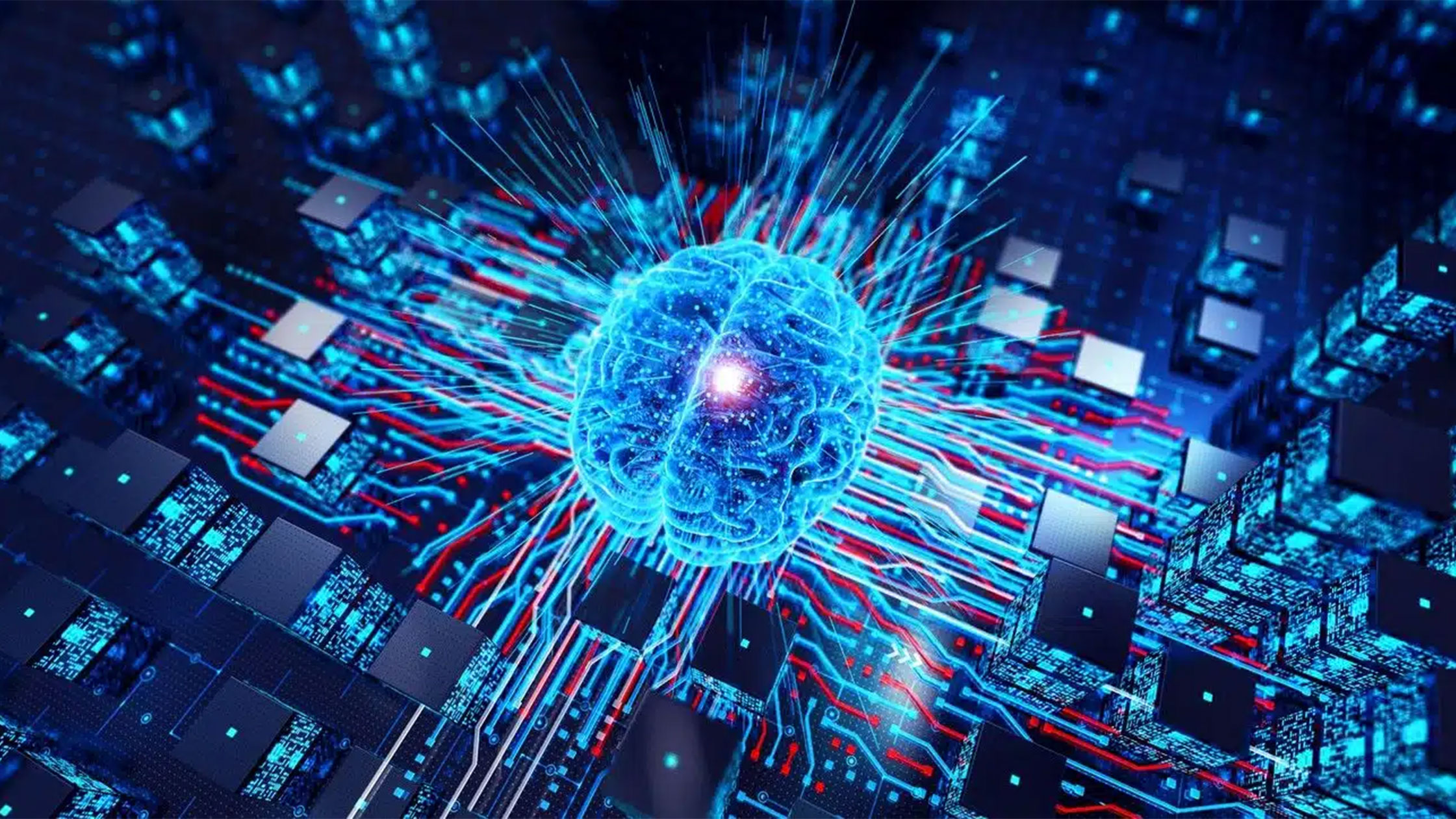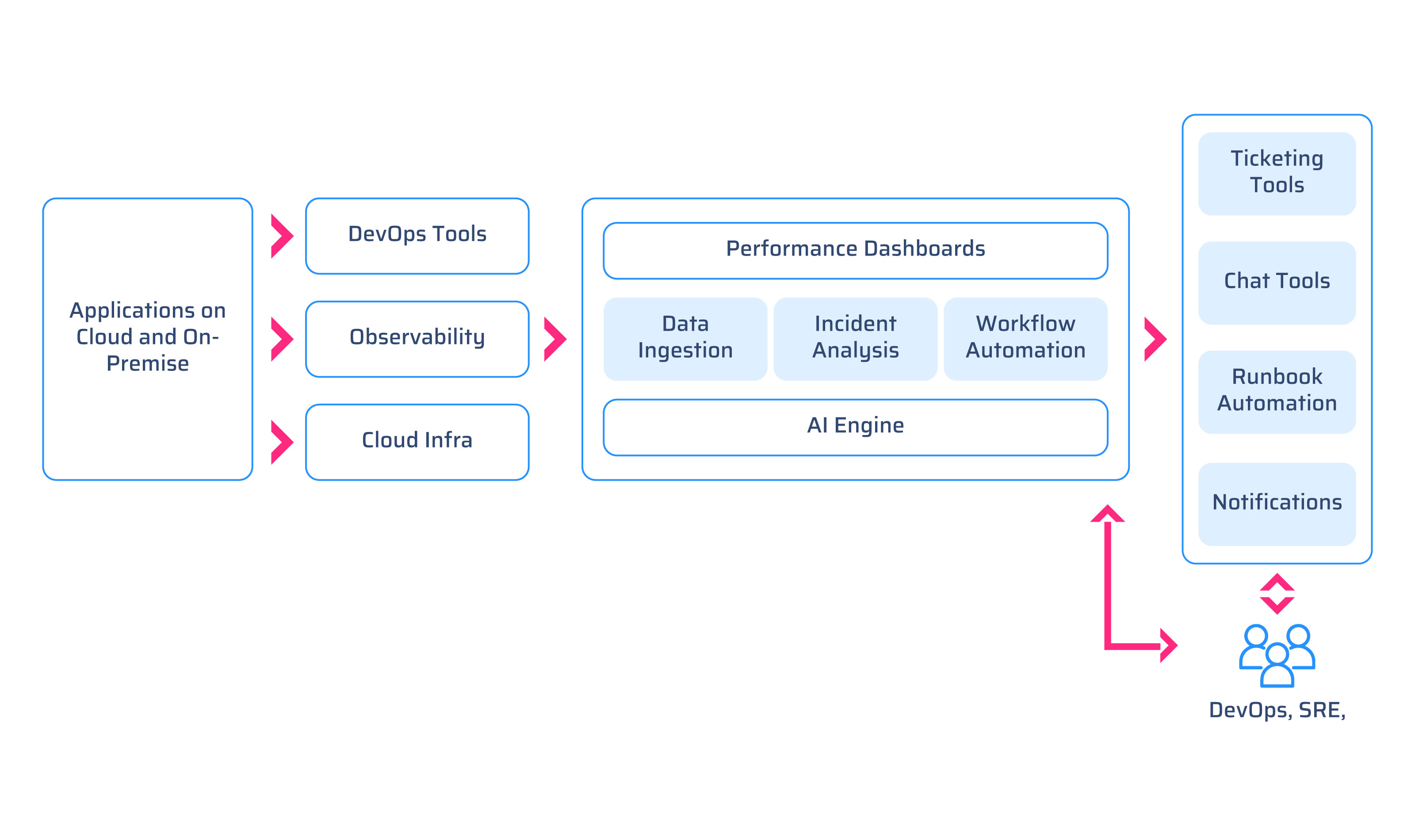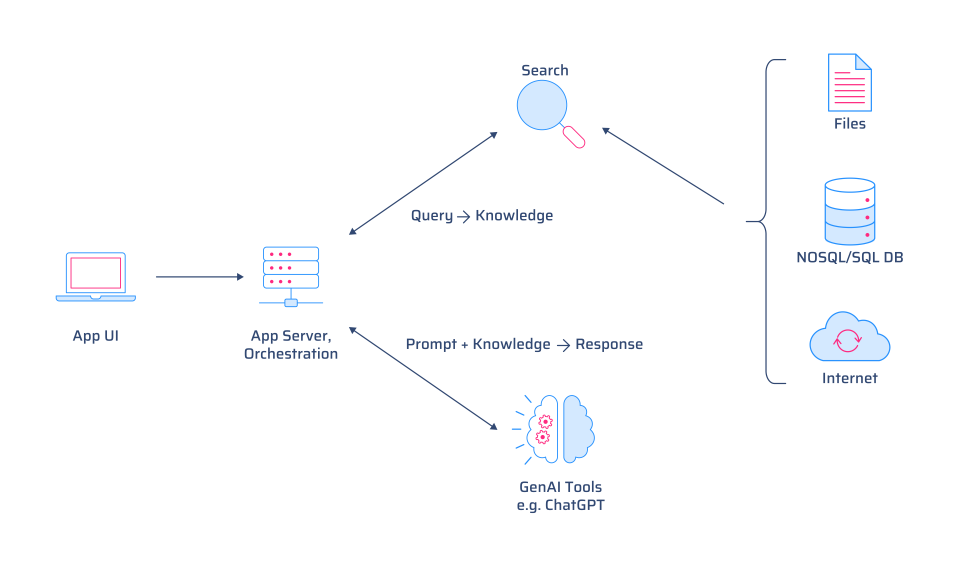
Listen to this blog
In today's fast-paced digital landscape, Managed IT services and IT operations face the constant challenge of maintaining seamless service delivery while adapting to rapid technological changes.
As per a report by Gartner, by 2027, more than 40% of digital workplace operational activities will be performed using management tools that are enhanced by Gen AI, dramatically reducing manual effort.
This blog explores how Gen AI can be harnessed to revolutionize IT operations, supported by research data, industry insights, and the tools that are showing the way for the future.
1. Intelligent incident management
Incident management is a critical aspect of IT operations. Today’s IT Ops teams face a tsunami of alerts from varied observability, hyperscalers and DevOps tools. Ingesting this huge data and processing it into meaningful actions is a daunting task.
Gen AI can put incident management on steroids by allowing ingestion of data from multiple sources, real-time analysis and correlation, and generating actionable alerts and automated response suggestions. AI can quickly diagnose issues, create and prioritize meaningful incidents based on their impact, and even suggest and orchestrate potential solutions leveraging past data. This reduces incident resolution time and minimize disruptions to business operations.
There are various tools that can integrate with existing ITSM tool to assimilate in the current IT environment.
This is how intelligent incident management works:

2. Improving user support using RAG
User support is an essential component of IT operations. Gen AI can enhance user support by powering chatbots and virtual assistants that provide instant responses to common queries.
However, Large Language Model (LLM) have limitations with regards to organization specific information and cannot provide relevant information efficiently in that context.
Retrieval Augmented Generation (RAG) is an architecture that augments the capabilities of a LLM like ChatGPT by adding an information retrieval system that provides grounding data. For ITSM operation, the chatbot using RAG can access historical ticket information or external websites to provide accurate, relevant and up-to-date answers.
Here is how RAG typically works:

3. Streamlining DevOps
DevOps practices aim to shorten the development lifecycle and deliver high-quality software quickly. Gen AI can streamline DevOps, accelerating development and ensuring robust software releases. Here are different ways Gen AI can integrate into DevOps workflow:
Automated code generation – Gen AI can produce boilerplate code and scripts, greatly cutting down on development time. A DevOps team can leverage Gen AI services to automate the creation of Infrastructure as Code (IaC) scripts, making the setup and management of cloud infrastructure more efficient.
Intelligent testing – Gen AI can create test cases, automate testing workflows and detect potential issues early in the development process. This proactive strategy enhances software quality and minimizes the time needed for manual testing.
4. Optimizing resource allocation
Efficient resource allocation is vital for maintaining optimal IT performance at the right cost. Generative AI can analyze workload patterns and predict future resource requirements, enabling dynamic allocation of resources such as CPU, memory, and storage. This ensures that IT infrastructure is used efficiently, reducing costs and improving performance. Few key benefits of such AI based infrastructure management are:
- Autonomic resource management: Automatically allocate resources like CPU, memory, and storage based on demand, ensuring applications always have the necessary resources.
- Actionable insights: Provide specific, actionable recommendations for optimizing performance and reducing costs, such as moving workloads, resizing instances, or adjusting configurations.
- Multi-cloud support: Support multi-cloud environments, allowing for seamless optimization across different cloud providers and on-premise infrastructures.
- Proactive issue prevention: Help prevent potential issues, by identifying and resolving resource conflicts before they impact performance,.
- Cost optimization: The platform continuously evaluates resource utilization to minimize waste and optimize cloud spend.
5. Enhancing security
Cybersecurity threats are a constant concern for IT operations. Gen AI can enhance security by detecting unusual activity patterns that may indicate a security breach.
Here are some of the ways in which Gen AI can augment IT SecOps.
- Enhanced threat intelligence: Gen AI can process and analyze data from various sources to provide up-to-date threat intelligence, helping organizations stay ahead of emerging cyber threats.
- Threat detection: Gen AI can analyze vast amounts of data in real-time to identify unusual patterns or behaviors that may indicate a security threat, such as malware or phishing attempts.
- Automated incident response: It can automate the response to security incidents by identifying the nature of the threat and initiating appropriate countermeasures, reducing response time.
- Vulnerability management: Gen AI helps in scanning and identifying vulnerabilities within systems and networks, providing recommendations for patches or fixes before they can be exploited.
- Behavioral analysis: By continuously monitoring user and system behavior, Gen AI can detect anomalies that might signal insider threats or compromised accounts.
Conclusion
Organizations can enhance efficiency, reduce costs, and improve service delivery by leveraging AI's capabilities. As AI technology continues to evolve, its integration into IT operations will become increasingly essential for staying competitive in the digital age.
Gen AI is not just a futuristic concept; it is a practical tool that can drive significant improvements and benefit Managed Services in IT operations. But, with so many technologies in place that are evolving fast, it could be confusing to decide where to start. Here are some suggestions that could rationalize your decisions and provide a springboard for the future.
- Analyse your support data – Review tickets and service request based on category, time taken, effort, lead time, cost, volume, user sentiments, etc. Identify top challenges with this data analysis.
- Identify organizational pain points - Assess like IT development cost, infrastructure costs, security risks, etc.
- Focus on top 2 priorities - Select two key priorities from the above analysis and explore the modern solutions suggested.
- Iterate and refine - Repeat the process to continuously improve your approach based on ongoing insights and real-world implementation.
Incorporating the latest advancements in technology is crucial for staying ahead in today's competitive landscape. In this context, we would like to give a special shoutout to our media partner, DesignRush, which highlights the significance of adopting modern development frameworks to enhance operational efficiency, with Flutter as a prime example. Their insights into current trends provide valuable guidance for organizations aiming to optimize their IT operations.
Contact us today to learn how these advancements will not only streamline processes but also position organizations at the forefront of the digital revolution.
Author:
Varun Gupta, Sr. Director
Varun is an expert in Large Scale Applications Management Services and IT Services Management. Currently, he is working with Visionet as Sr. Director. He comes with more than two decades of experience in IT Services – particularly AMS in Hi-tech, retail and automotive industries.




